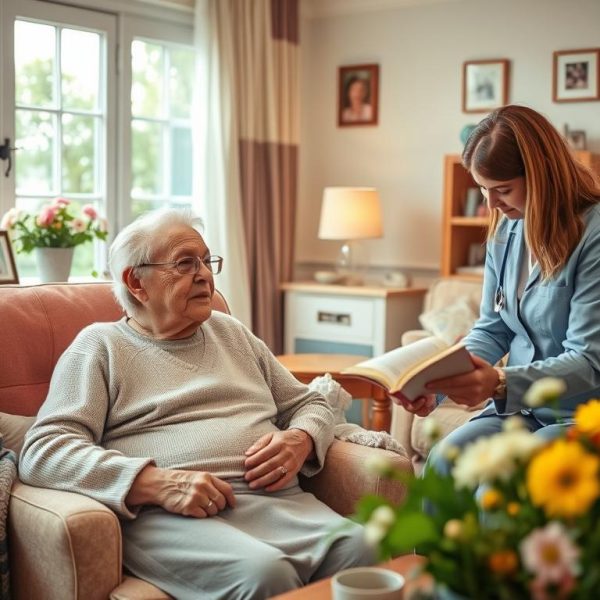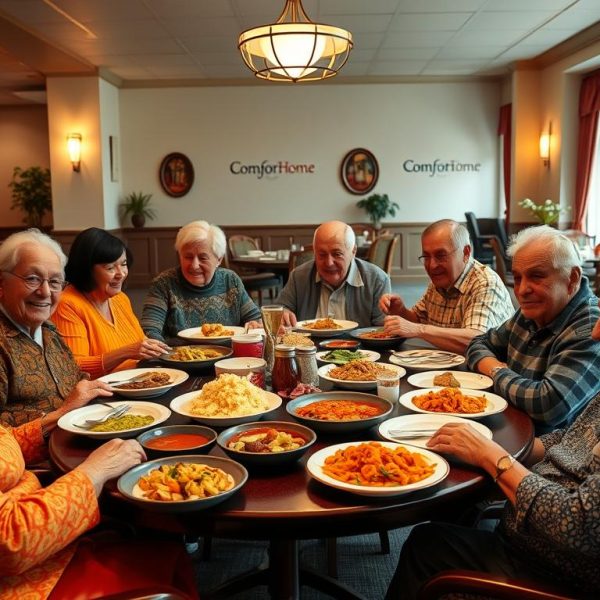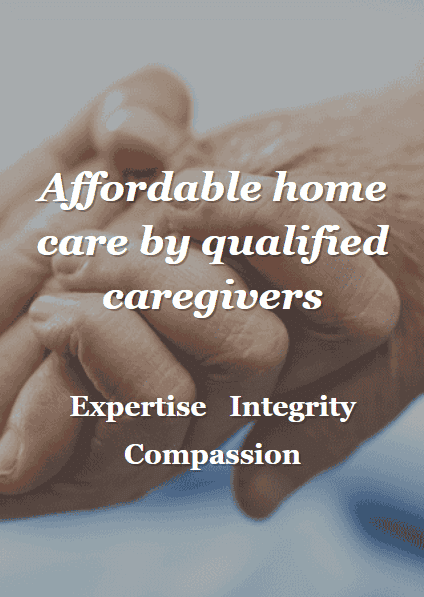Are you feeling overwhelmed by the prospect of finding the perfect caregiver for your loved one? You’re not alone. Navigating the complex world of caregiving can be daunting, but we’re here to help. In this expert guide, we’ll walk you through 10 essential steps to find the ideal caregiver who’ll provide top-notch care and peace of mind.
From assessing qualifications to evaluating personality compatibility, we’ll cover everything you need to know. Whether you’re exploring home care options or seeking professional help, this comprehensive roadmap will empower you to make informed decisions. Let’s embark on this journey together and discover how to find a caregiver who’ll become an invaluable part of your support system.
• Learn how to effectively assess caregiver qualifications
• Discover methods for finding the best caregivers in your area
• Gain insights on building positive relationships with caregivers
• Understand the importance of clear communication and expectations
Understanding the Need for a Caregiver
As our loved ones age, their care needs often become more complex. Many families find themselves at a crossroads, wondering if it’s time to seek professional help.
Maybe your dad, once the family’s rock, now struggles with daily tasks. Or perhaps your mom, always the life of the party, is becoming increasingly forgetful.
These changes can be tough to accept. You might feel guilty even considering outside help. But remember, seeking support doesn’t mean you’re failing as a family caregiver.
In fact, recognizing when you need assistance is a sign of strength and love. It shows you’re prioritizing your older adult’s well-being.
Whether it’s round-the-clock care or just a few hours of respite, a caregiver can provide invaluable support. They can help with everything from medication management to companionship, allowing you to focus on quality time with your family member.
💡 Key Takeaways: Recognizing the need for a caregiver is a crucial step in ensuring the best care for your aging loved one while maintaining your own well-being.
Key Considerations When Choosing a Caregiver
Finding the right caregiver is a critical decision-making process. It’s not just about qualifications; it’s about finding someone who’ll become a part of your support system.
Assessing Qualifications and Experience
When evaluating potential caregivers, look beyond basic certifications. Consider their experience with specific conditions your loved one might have.
For instance, if your mom has Alzheimer’s, a caregiver with dementia care experience would be invaluable. They’d understand the unique challenges and have strategies to manage symptoms effectively.
Ask about their training in emergency situations. Can they perform CPR? Do they know how to respond to a fall?
Remember, expert caregiving isn’t just about medical knowledge. It’s also about compassion and patience. Look for someone who demonstrates these qualities during your interactions.
Evaluating Personality Compatibility
The right fit goes beyond professional qualifications. It’s about finding someone who meshes well with your loved one’s personality.
Is your dad a sports fanatic? A caregiver who can chat about the latest game might be perfect. Does your mom love gardening? Someone who shares this interest could bring joy to her days.
Good communication is crucial. During interviews, observe how the caregiver interacts. Are they attentive? Do they show genuine interest?
Consider arranging a trial period. This allows you to see how the caregiver and your loved one interact in real-life situations.
💡 Key Takeaways: Choosing the right caregiver involves assessing both professional qualifications and personal compatibility to ensure a harmonious caregiving relationship.
Methods for Finding the Best Caregiver
Finding the perfect caregiver can feel like searching for a needle in a haystack. But don’t worry, there are several effective methods to explore.
Using Reputable Agencies
Home care agencies can be a great starting point. They handle background checks, training, and scheduling in a professional manner.
For example, agencies like “CaregiverUSA” or “Visiting Angels” have rigorous vetting processes. They ensure each caregiver meets high standards before placement.
Plus, if your regular caregiver is sick, agencies can quickly provide a replacement. This reliability can be a real stress-reliever for families.
Utilizing Online Platforms
In today’s digital age, online platforms have become a real time-saver in the caregiver search.
Websites like Care.com or Carelinx allow you to browse caregiver profiles, read reviews, and even conduct video interviews. This new technology makes it easier to find someone who matches your specific needs.
Imagine finding a caregiver who not only has the right skills but also shares your mom’s love for knitting. That’s the kind of match these platforms can facilitate.
Exploring Community Resources
Don’t underestimate the power of your local community. Your area agency on aging can be a goldmine of information.
Senior centers often have bulletin boards where caregivers post their services. Local support groups for conditions like Alzheimer’s or Parkinson’s can also provide recommendations.
Even your neighbor might know a trusted caregiver looking for work. Sometimes, the best care solutions are right in your backyard!
💡 Key Takeaways: Utilize a combination of reputable agencies, online platforms, and community resources to cast a wide net in your search for the ideal caregiver.
Conducting Background Checks and References
When it comes to inviting someone into your home to care for a loved one, you can’t be too careful. Background checks are a crucial step in ensuring your family’s safety.
Start by requesting a criminal background check. Many local police stations offer this service. Don’t hesitate to ask for legal documents proving their eligibility to work.
Next, dive into their professional history. Contact previous employers and ask specific questions about their performance and reliability.
Remember, medical information is sensitive. Ensure the caregiver understands and respects privacy laws.
Lastly, trust your instincts. If something feels off, it’s worth investigating further.
💡 Key Takeaways: Thorough background checks and reference checks are essential for ensuring the safety and reliability of your chosen caregiver.
Setting Clear Expectations and Communication
Clear communication is the foundation of any successful caregiving relationship. It starts with setting precise expectations from day one.
Create a detailed job description. Include daily tasks, working hours, and any specific respite time you might need.
Don’t shy away from asking important questions. How will they handle emergencies? What’s their policy on overtime?
Establish a communication system that works for everyone. Maybe it’s a daily text update or a weekly family meeting.
Remember, good communication goes both ways. Encourage the caregiver to voice their concerns or suggestions.
Be open to feedback. Perhaps they’ve noticed a change in your loved one’s behavior that you’ve missed.
Regular check-ins can prevent small issues from becoming big problems. It’s all about creating an environment where everyone feels heard and valued.
💡 Key Takeaways: Open, clear, and consistent communication is crucial for establishing a positive and effective caregiving relationship.
Building a Positive Relationship with the Caregiver
A caregiver isn’t just an employee; they’re an extension of your family’s support system. Building a positive relationship can make all the difference in your loved one’s care.
Start by showing appreciation. A simple “thank you” can go a long way.
Include the caregiver in family discussions about care plans. Their insights can be invaluable.
Respect their expertise. They may have learned tricks that make caregiving easier.
Remember, they’re human too. Be understanding if they’re having a tough day.
Encourage them to connect with other caregivers. This support network can help prevent burnout.
By fostering a positive relationship, you’re creating a nurturing environment for everyone involved.
💡 Key Takeaways: Cultivating a positive relationship with your caregiver creates a supportive environment that benefits both the caregiver and your loved one.
Financial Considerations and Budgeting
Let’s face it: quality care comes at a financial cost. But with careful planning, you can manage expenses without compromising on care.
Start by researching average caregiver rates in your area. This gives you a realistic baseline for budgeting.
Consider different care options. Maybe a mix of professional care and family support could work?
Look into long-term care insurance or veterans’ benefits. These can help offset costs.
Don’t forget to factor in hidden expenses like transportation or special equipment.
Remember, investing in care now can prevent costly health issues down the line.
And here’s a pro tip: practice self-care. By staying healthy yourself, you can continue to provide valuable support.
💡 Key Takeaways: Effective financial planning and exploring various care options can help manage the costs of caregiving while ensuring quality care.
Creating a Care Plan
A well-crafted care plan is like a roadmap for your caregiving journey. It outlines daily tasks, medical needs, and emergency procedures.
Start by listing all necessary daily tasks. From medication schedules to preferred meal times, no detail is too small.
Include strategies for handling potential medical emergencies. What if mom falls? What if dad’s blood sugar drops?
Don’t forget to create a backup plan. What happens if the caregiver can’t make it one day?
Review and update the plan regularly. As your loved one’s needs change, so should the care plan.
Remember, flexibility is key. Be ready to adapt the plan as needed to ensure the best care possible.
💡 Key Takeaways: A comprehensive and flexible care plan ensures consistent, quality care and prepares you for various scenarios in the caregiving journey.
Addressing Caregiver Stress and Self-Care
Caregiving can be emotionally and physically draining. It’s crucial to address caregiver stress and prioritize self-care.
Recognize the signs of burnout. Are you feeling constantly exhausted? Losing patience easily? These could be red flags.
Encourage your caregiver to take regular breaks. Maybe it’s a 15-minute walk or a quick coffee with a friend.
Support groups can be a lifeline. They provide a safe space to share experiences and learn coping strategies.
Don’t neglect mental health. Consider offering access to counseling services as part of the caregiving package.
Remember, a caregiver’s well-being directly impacts the quality of care they provide. By supporting their own needs, you’re ensuring better care for your loved one.
Teach stress-relief techniques. Simple breathing exercises or mindfulness practices can work wonders.
Finally, lead by example. When you prioritize your own self-care, it gives the caregiver permission to do the same.
💡 Key Takeaways: Addressing caregiver stress and promoting self-care is essential for maintaining high-quality care and preventing burnout.
Utilizing Technology in Caregiving
In today’s digital age, technology has become a real time-saver in caregiving. It opens up a whole world of information and support at your fingertips.
Consider medication reminder apps. They can help ensure doses are never missed.
Video calling platforms like Skype or FaceTime allow family members to check in from afar.
Smart home devices can enhance safety. Think motion sensors or voice-activated emergency calls.
Wearable tech like fall detection watches provide peace of mind.
Online forums connect caregivers, creating a virtual support network.
Remember, while technology is helpful, it shouldn’t replace human interaction. Use it to enhance, not substitute, personal care.
💡 Key Takeaways: Incorporating technology into caregiving can enhance safety, improve communication, and provide valuable support for both caregivers and care recipients.
Preparing for Future Care Needs
Anticipating future care needs is a crucial part of the caregiving journey. It’s about asking the better questions now to determine the best course of action later.
Start by discussing potential health changes with your loved one’s doctor. What might the progression of their condition look like?
Consider how your family member’s needs might evolve. Will they need more specialized care in the future?
Think about your own circumstances. How might your ability to provide care change over time?
Planning ahead can prevent consistent disruption in care. It allows for smoother transitions and reduces stress for everyone involved.
Remember, it’s okay if plans change. The goal is to be prepared, not to predict the future perfectly.
💡 Key Takeaways: Proactive planning for future care needs helps ensure continuity of care and reduces stress associated with unexpected changes.
Seeking Professional Advice and Resources
When it comes to caregiving, there’s no shame in seeking expert advice. In fact, it’s one of the smartest moves you can make.
Consider consulting with an AARP researcher. They can provide valuable insights into the latest caregiving trends and resources.
The Mayo Clinic offers a wealth of information on various health conditions and care strategies.
Don’t overlook local resources. Your area’s Agency on Aging can connect you with nearby services and support groups.
Remember, professional advice doesn’t diminish your role. Instead, it empowers you to make informed decisions.
By tapping into these resources, you’re ensuring the best possible care for your loved one.
💡 Key Takeaways: Leveraging professional advice and resources enhances your caregiving knowledge and helps you make informed decisions for your loved one’s care.
Evaluating and Adjusting Care Plans
Care needs aren’t static; they evolve over time. That’s why it’s crucial to regularly evaluate and adjust your care plan.
Set aside time each month to take a second look at the current plan. Is it still meeting all of your loved one’s needs?
Pay attention to subtle changes. Maybe mom’s having a harder time with buttons lately. This could indicate a need for occupational therapy.
Don’t be afraid to make changes. Flexibility gives you a better chance of providing optimal care.
On the flip side, celebrate improvements too. If dad’s mobility has increased, maybe it’s time to reduce certain assistance.
Remember, adjusting the plan isn’t a sign of failure. It’s a proactive step towards better care.
💡 Key Takeaways: Regular evaluation and adjustment of care plans ensure that your loved one’s changing needs are consistently met, leading to better overall care.
Conclusion
Finding the perfect caregiver for your loved one is a journey that requires careful consideration, thorough research, and open communication. By following these 10 essential steps, you’re well-equipped to make an informed decision that ensures the best possible care for your family member. Remember, the right caregiver can significantly improve your loved one’s quality of life while providing you with peace of mind.
As you embark on this important process, keep in mind that it’s okay to take your time and trust your instincts. Building a strong support system and practicing self-care are crucial aspects of this journey. Don’t hesitate to seek professional help or join support groups for additional guidance and emotional support.
Ultimately, your efforts in finding the perfect caregiver will lead to a more comfortable and secure environment for your loved one. Stay positive, remain patient, and know that your dedication will make a world of difference in ensuring the best possible care for those who matter most to you.








